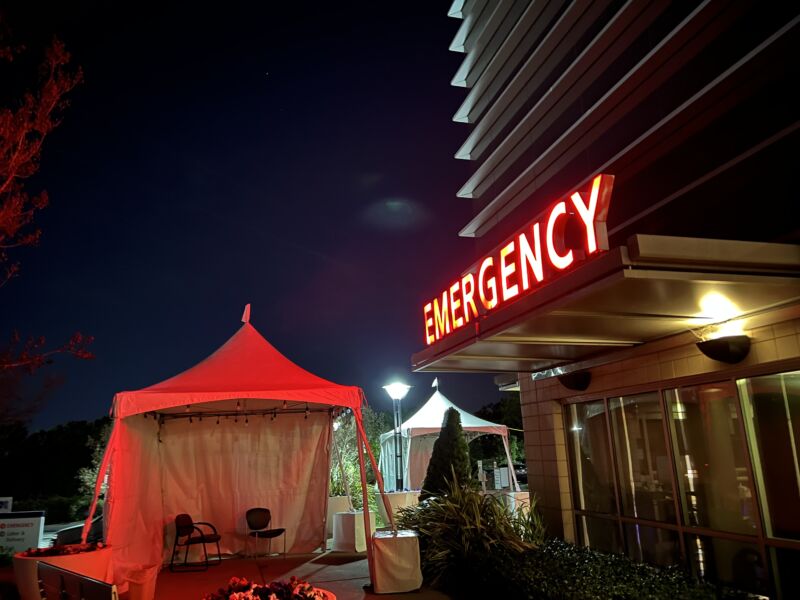
While COVID-19 remains at a standstill, hospitals across the country find themselves in crisis amid a towering spate of seasonal respiratory illnesses – particularly RSV in children – and longer-term problems such as staff shortages.
Pediatric beds are filled or full, people with urgent health problems wait hours in emergency room corridors and even parking lots, and some hospitals have set up outdoor tents, evoking memories of the early days of the pandemic.
In one of the most notable examples, the emergency department at a hospital in the Seattle area became so overwhelmed last month that the chief of staff at the department called 911 for help, telling firefighters they were “drowning” and in “state of emergency.” There were reportedly more than 45 people in the ward’s waiting room and just five nurses on staff.
Jay Christian, Central Kitsap’s chief of fire and rescue, told local media he sent a crew to the hospital, St. Michael Medical Center, and firefighters helped hospital staff there clean rooms, change beds and monitor vital signs. to take the patient until the crisis subsided.
But in public meetings last week, the hospital’s president, Chad Melton, acknowledged that things are not getting better. Melton reported that there are more than 300 job openings at the facility, but none have applied for positions in the emergency department. “Especially the emergency department, zero job interviews with candidates. Zero,” Melton said.
Beyond capacity
A report last month from healthcare analytics company Definitive Healthcare estimated that more than 300,000 healthcare providers left the workforce last year due to burnout and other pandemic stressors.
As the weather turns colder, a mix of seasonal respiratory viruses, including RSV (respiratory syncytial (sin-SISH-uhl) virus), flu, rhinovirus, and enteroviruses, are rising early and hard. Children’s hospitals are flooded and beds are filling. The pediatric intensive care units are also full in many places.
In Pittsburgh, a children’s hospital is seeing a flood of RSV patients and emergency room wait times are up to eight hours. In California, hospitals in Oakland and San Francisco are seeing patient numbers higher than at any other time during the pandemic.
“Our ICUs are full. We have children in the boarding facility in the emergency department who haven’t even been sent to the ground because all the hospital beds have been taken,” Jackie Grupp-Phelan, division chief of Pediatric Emergency Medicine at UCSF Benioff Children’s Hospitals, told ABC7 of the Bay Area. Grupp-Phelan added that the hospitals are turning children away from outside the area they would normally take.
But children are not the only ones who have to wait a long time for care. At Massachusetts General Hospital, adult patients reported queuing in the hallways and waiting eight hours for a bed. The Boston Globe noted that, as is the case outside of Seattle, Massachusetts is also feeling the double whammy of a surge in patients and understaffed facilities. According to a report from the Massachusetts Health & Hospital Association last week, an estimated 19,000 job openings are unfilled in the state.

